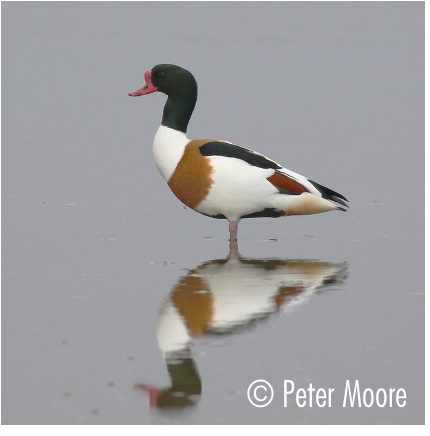You can view this information in two different ways. Our alphabetical list provides information on the status of each species within the harbour, finder dates and names, photos and favoured locations. By clicking on the Systematic List button you will be presented the full Poole Harbour systematic list which includes status of species, pending records and historical accounts.
To date, 333 species have occurred and have been accepted within the Birds of Poole Harbour boundaries. A further 11 distinct subspecies have also been seen. In addition, we have two species/subspecies which have been recorded, but are awaiting acceptance by the appropriate records panel.
There are a handful of historical records, for which there is currently insufficient information to allow their inclusion onto the Poole Harbour list, but are believed to be genuine records. They are listed at the end of the list.
Finally, there are a number of feral or escaped species that have been recorded within the Birds of Poole Harbour boundaries. They are included for completeness, but are not included on the Poole Harbour list.
We would be interested in hearing details of any species that do not appeared on this list.
The Birds of Poole Harbour systematic list is a PDF which you can view by clicking on the button below. It was last updated on December 2019.
Full Poole Harbour Systematic List
Tadorna tadorna
Resident
Shelduck were ‘so disgracefully common‘ that in the 1930’s the harbour was being described as Shelduck headquarters and since more of the land was being managed for wildlife it attracted even more from other wetlands in the south of England. This has given Poole internationally important status for wintering numbers of this species.
Various estimates have been attempted for the full harbour breeding population . In the 70’s Prendergast and Boyes estimated between 50 – 70 pairs and in 1975 Collins came to the same conclusion. The peak summer number for adults in summer was 274 on 10th July 1994 and they have bred on Brownsea (up to thirty pairs 2004), Arne (up to 30 pairs), Lytchett Bay, Hatch Pond, Canford Heath, Green Island, Brands Bay, Upton Country Park, Goathorn and Newtons Bay, Fitzworth and Studland (up to 50 pairs throughout the area). The amounts in brackets were estimates made by full time wardens of the three main reserves.
Once breeding is over in July local crèches build up and the balance of adults leave the harbour for communal moult in the German Waddensea. In June and July its worth looking out for crèches of around 25 different aged young with 2 adults. In the survey in 10th July 1994 five crèches containing 169 juveniles were found. The record number of juveniles was 197 in July 1992. Among other environmental pressures, it’s possible that the increase in recreational disturbance in the breeding season could be affecting their numbers. In October the adults return probably accompanied by birds from Scandinavia and the Baltic making up a regular aspect of a sea watch from Branksome and numbers in the harbour start to build. The maximum count of 4650 in January 1997 came after easterlies and north-easterlies froze the harbour for a week and included 1230 at Keysworth.
Alan Bromby in Birds of Dorset points out that “The Poole gunners had local names for most species of wildfowl which have now largely died out. Shelduck were known as “Burrow Ducks”, Pochards as “Redheads” and Tufted Ducks as “Curre” whilst the term “Ginger Curre” was reserved for Goldeneye”. Notorious ex RSPB Arne warden Bryan Pickess in his days wardening at Arne would only ever guarantee Shelduck and Meadow Pipit on any guided walk on the reserve!
“The worrying decline in Poole Harbours wintering population continued with a maximum of only 1,754 in 2000/2001. Winter maxima throughout the 1990’s were over 2000 birds, but recent winter counts show maximums of just 976 in February 2020.
Despite their decline, they’re one of the easiest birds to find on the southern sides of the harbour, and is evident in most areas with exposed mud on the low tide.

© 2025 Birds of Poole Harbour Registered Charity No. 1152615